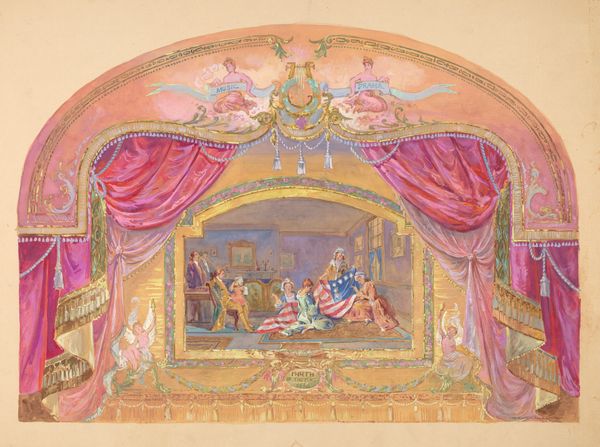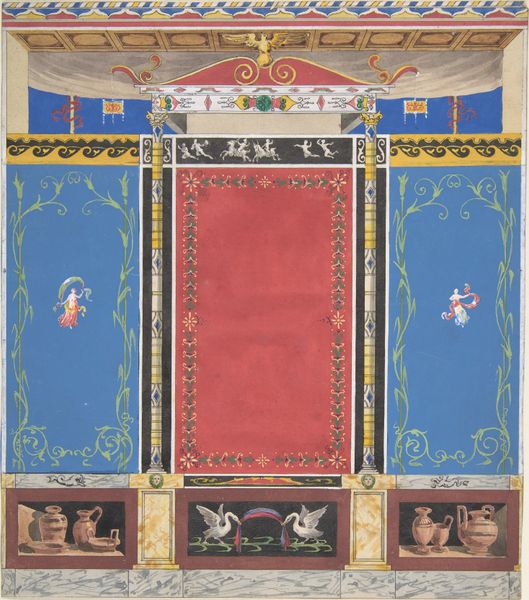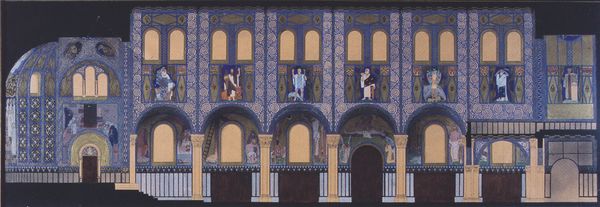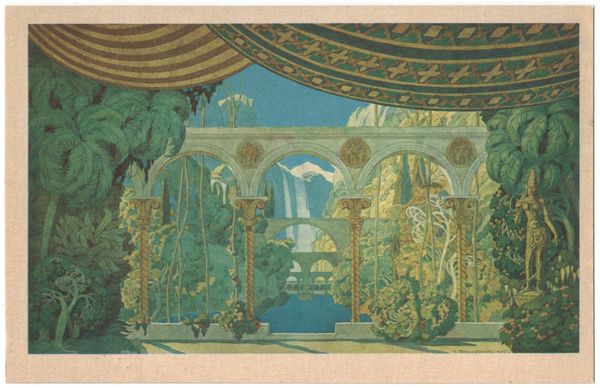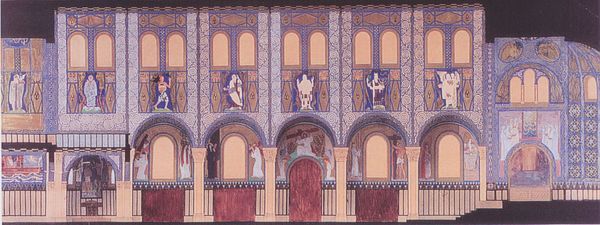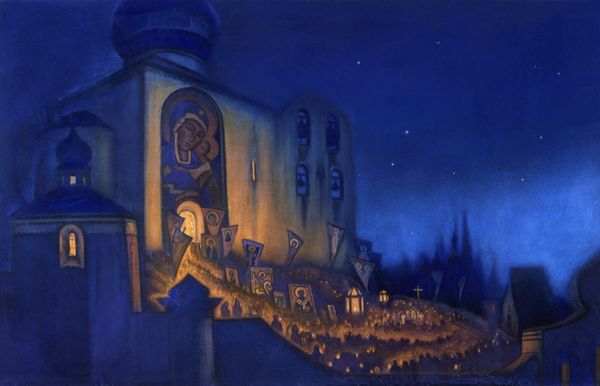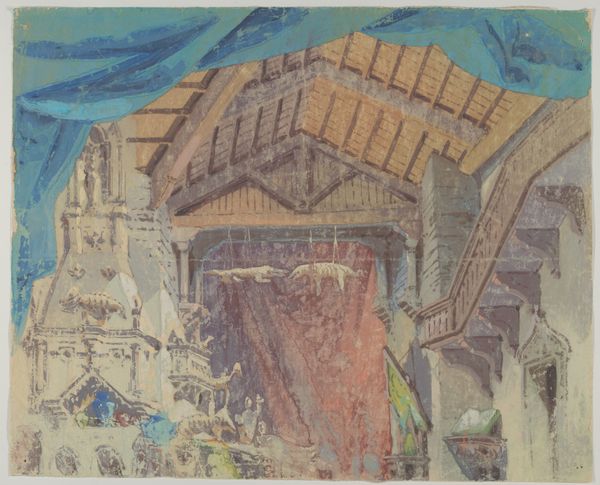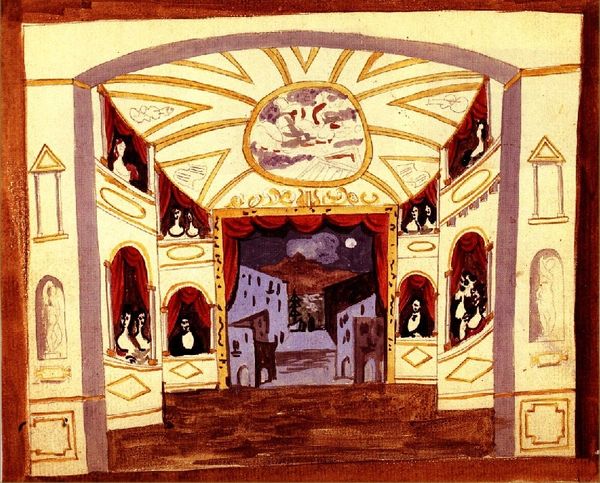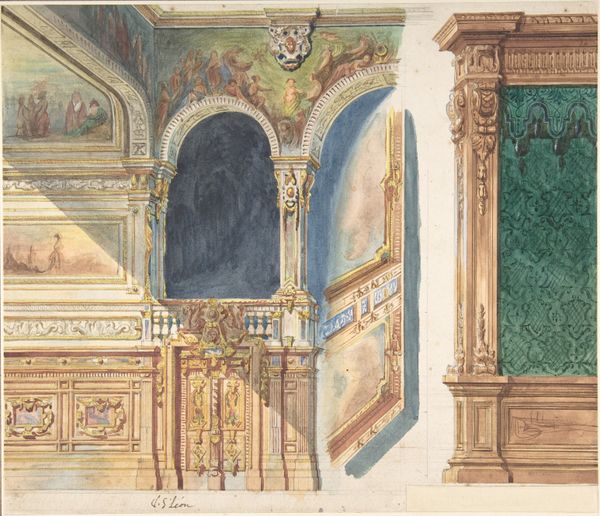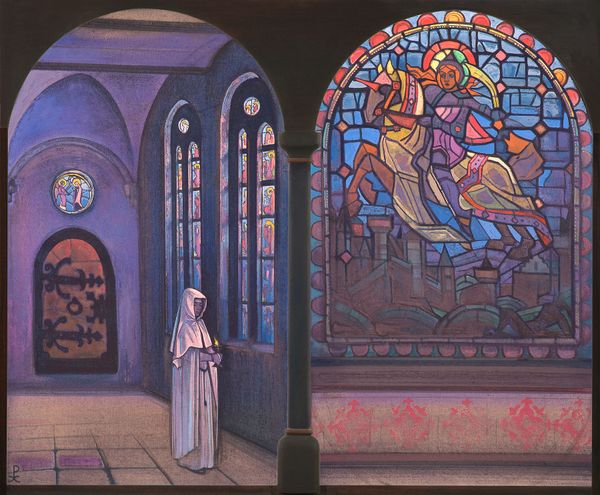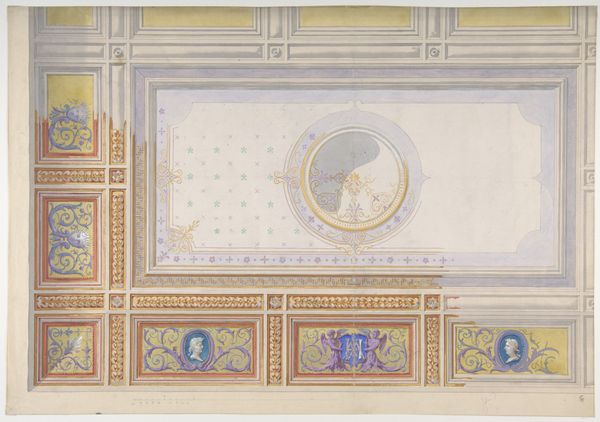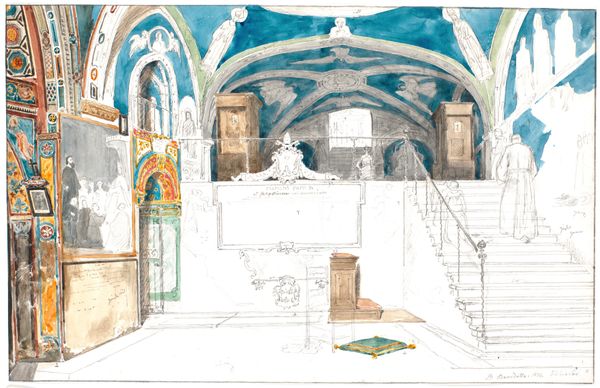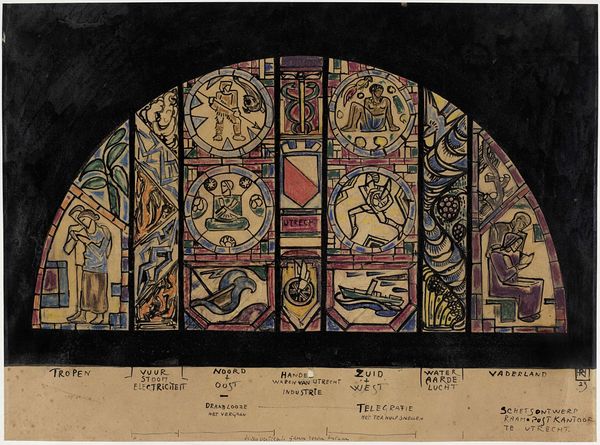
drawing, architecture
#
drawing
#
art-nouveau
#
historic architecture
#
traditional architecture
#
architecture
Dimensions: 78.5 x 143.5 cm
Copyright: Public domain
Curator: This is Koloman Moser's design for the entrance wall of the Holy Spirit Church in Düsseldorf, created around 1907. Editor: It's... unexpectedly dreamlike. The intense blue is striking, but there’s also a fragility. The palette lends it a ethereal quality. Curator: Indeed, the rendering employs precise symmetry. The rhythmic repetition of architectural elements – arches, pillars – sets a visual foundation, onto which spiritual symbolism is laid, reinforcing the notion of the divine. Editor: And heavy with traditional iconography. The Stations of the Cross dominate each arched panel along the base, flanking what appears to be a centrally placed doorway. It immediately places the viewer within a narrative, a journey. What are we to make of the two figures atop this design, bearing inscriptions? Curator: The inscription alludes to divine scripture. Flanking the word are possibly Saint Peter and Saint Paul; anchoring faith through textual and figurative components is central to the meaning embedded in this section of the drawing. The placement is key, too, signaling authority and historical lineage, even, that underpins the whole entrance. Editor: The shimmering, golden tone in the upper register suggests the promise of transcendence; what feels like Heaven visualized above our world. And above that doorway is the promise of the bible, almost literally illustrated with the two pillars that bore such significance within the sacred temples and churches of this era. There’s a dialogue here between earthly suffering and spiritual ascent, no? Curator: Precisely. Moser skillfully utilizes visual components to articulate that very dichotomy. Observe the carefully delineated spaces, the contrast in tones from dark base to the ethereal lightness above, reinforce this interplay of visual markers. This contributes to the artwork's intrinsic meaning as the way that structure determines what an object is. Editor: It's interesting how this work functions as both a decorative, Art Nouveau piece, and as a serious reflection on religious experience. The composition guides one's vision in how one reads the image, almost functioning as a sign that reads the world. The symbolic vocabulary of devotion permeates this design and speaks to universal experiences of faith. Curator: Through its unique arrangement of aesthetic elements, a structural interpretation enables the viewer to truly understand its beauty. Editor: Seeing those images with your approach truly helped open my eyes. The blend of familiarity and otherworldly aura is certainly lasting.
Comments
No comments
Be the first to comment and join the conversation on the ultimate creative platform.

